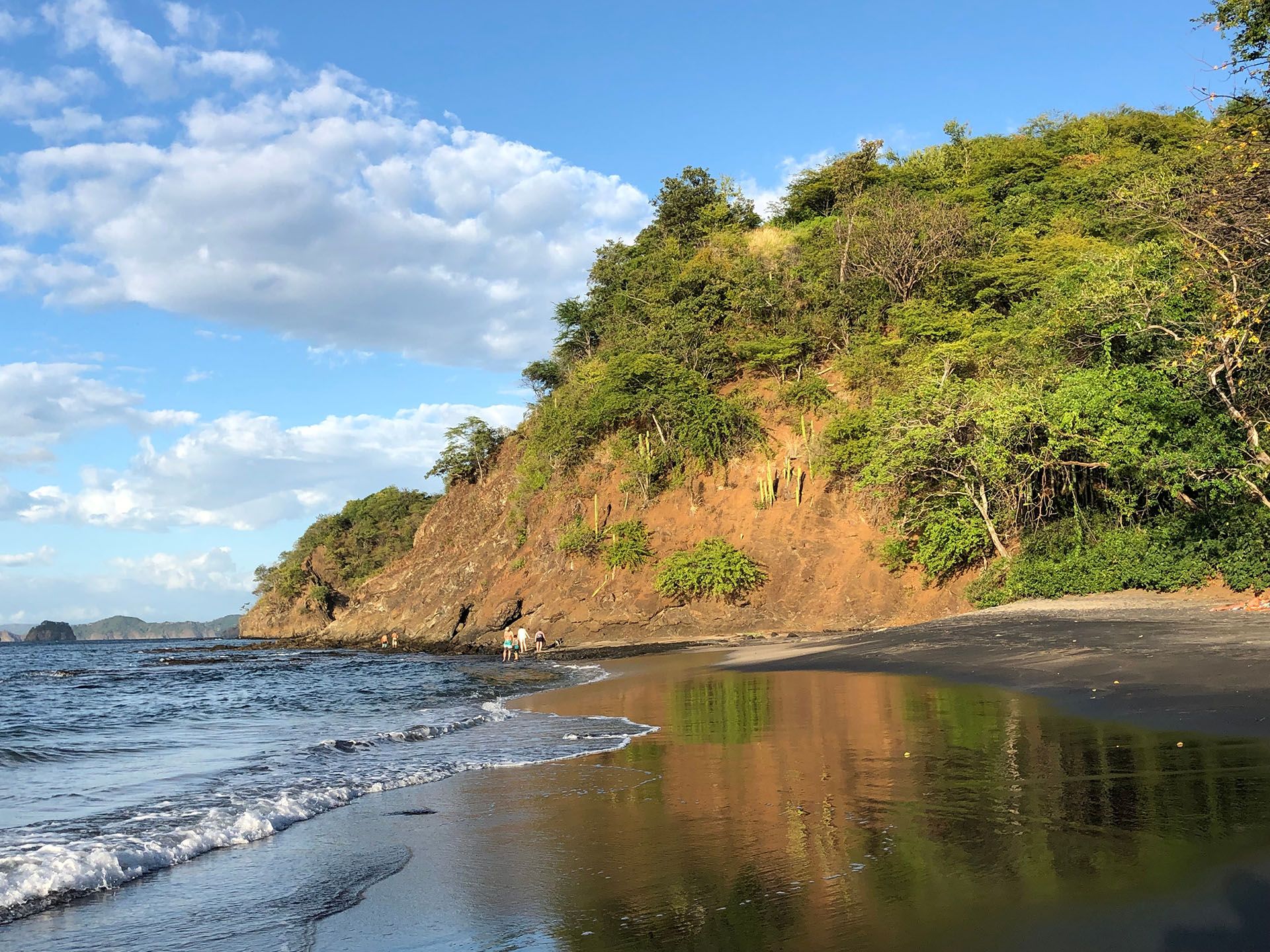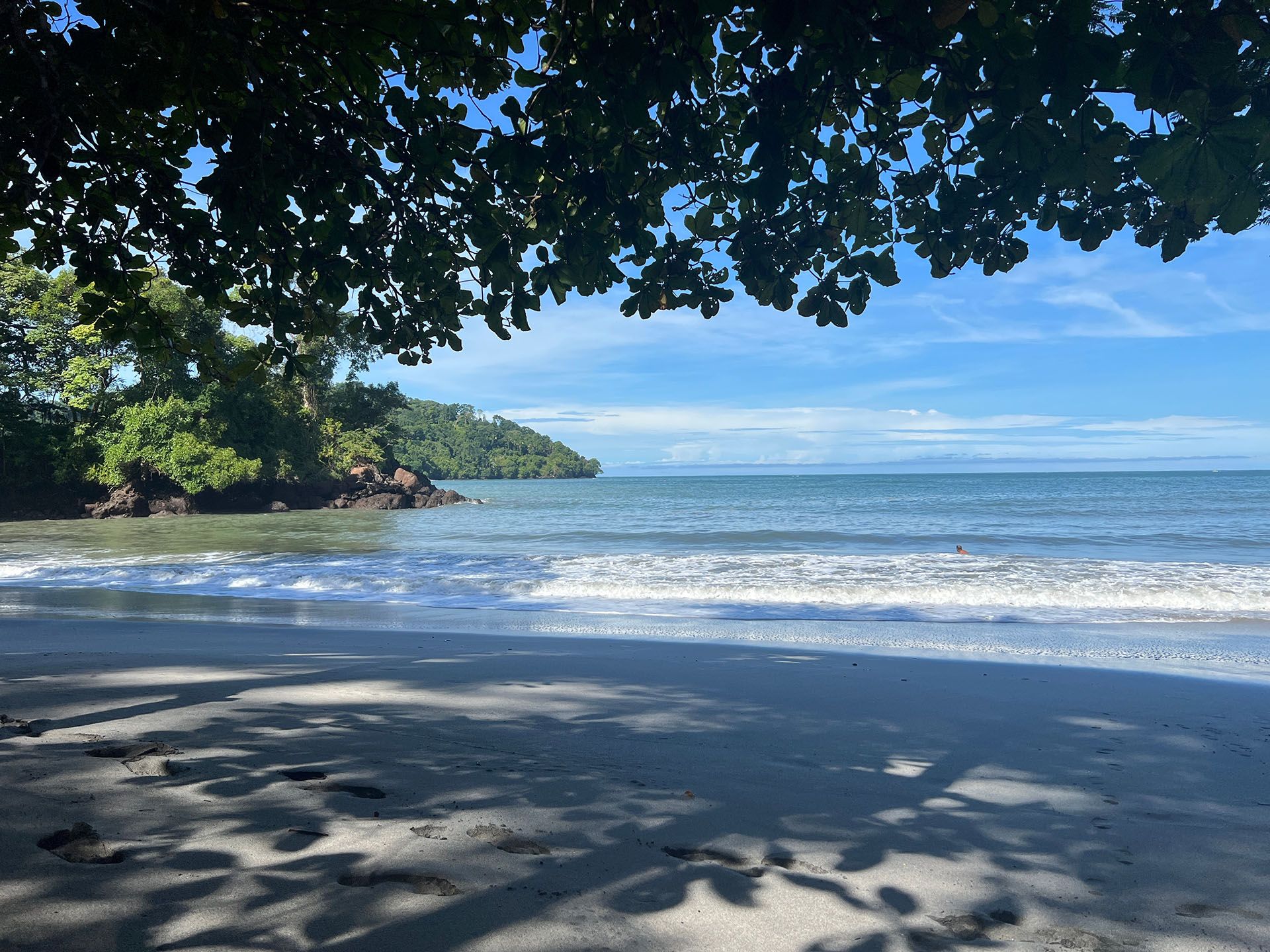Planning your trip to Costa Rica in August
Some Costa Rica travel tips to help you plan your trip:
What to pack
Pack for consistently wet conditions. A second pair of shoes is a good idea, since drying time can be slow. Moisture-wicking socks and quick-dry clothes help keep things comfortable. A basic laundry setup—a small detergent bottle, travel clothesline, and sink stopper—makes it easier to rewear essentials. Waterproof phone and camera cases are useful, and a small umbrella can double as sun protection. A power bank helps when solar charging is unreliable, especially in overcast areas.
For muddy hikes, gaiters are worth packing, and plastic or dry bags are great for separating wet and clean items.
Planning your itinerary
If you’re looking at Costa Rica for your vacation in August, starting with a good itinerary can make things easier. Here are some options to consider:
- Costa Rica itinerary 5 days: Check out San José’s cultural highlights, then head to La Fortuna for hiking trails and waterfalls. Explore Arenal Volcano’s hiking paths and hot springs, then finish in Monteverde’s cloud forest and hanging bridges, with a coffee farm tour back in San José.
- Costa Rica itinerary 7 days: Start in San José, then spend a few days in Manuel Antonio’s beaches and rainforests. After that, check out Monteverde’s cloud forest, zipper-lining, and hanging bridges. End in La Fortuna with Arenal Volcano’s trails, waterfalls, and hot springs.
- Costa Rica itinerary 10 days: Begin in San José, travel to Tortuguero’s canals, then explore La Fortuna’s rainforest and Arenal Volcano. Spend time in Manuel Antonio National Park with its beaches and diverse wildlife, and finish with some surfing and sunset views at Jaco Beach.
- Costa Rica itinerary 14 days: Begin in San José, then explore Tortuguero’s canals, Puerto Viejo’s Caribbean charm, and Cahuita’s coral reefs. Visit La Fortuna and Arenal Volcano, Monteverde’s cloud forests, and finish your trip in Manuel Antonio for beaches and wildlife.
When to book
This is the best time for the Caribbean coast—places like Puerto Viejo and Cahuita usually see more sun and calmer seas. If you’re planning a trip there, aim to book your place two to three months ahead, especially for beachfront spots. On the Pacific coast, things are quieter and often don’t require as much advance planning.
If you're interested in turtle nesting tours in Tortuguero, definitely book ahead—this is peak time, and tours fill up quickly. Over in Arenal and La Fortuna, you’ll likely get afternoon rain, but mornings are clearer, and the weather makes hot springs feel extra relaxing without big crowds.
Emergency weather information
August brings heavier, more consistent rain, and that means a few things: roads in the mountains—like near Arenal or Poás—can get sketchy fast. Landslides are common, so check route conditions before heading out and avoid driving when the rain’s really coming down. Rivers rise quickly too, so don’t be surprised if a rafting trip gets canceled last-minute. At the coast, erosion can create sudden drop-offs in the sand, and the Pacific side gets strong rip currents—only swim where there are lifeguards. You might see color-coded alerts from the National Emergency Commission (green, yellow, red).
For more travel inspiration, see our guide to creating your own Costa Rica itinerary, with tips from local travel experts, or find extra ideas in our tailored Costa Rica trips.





